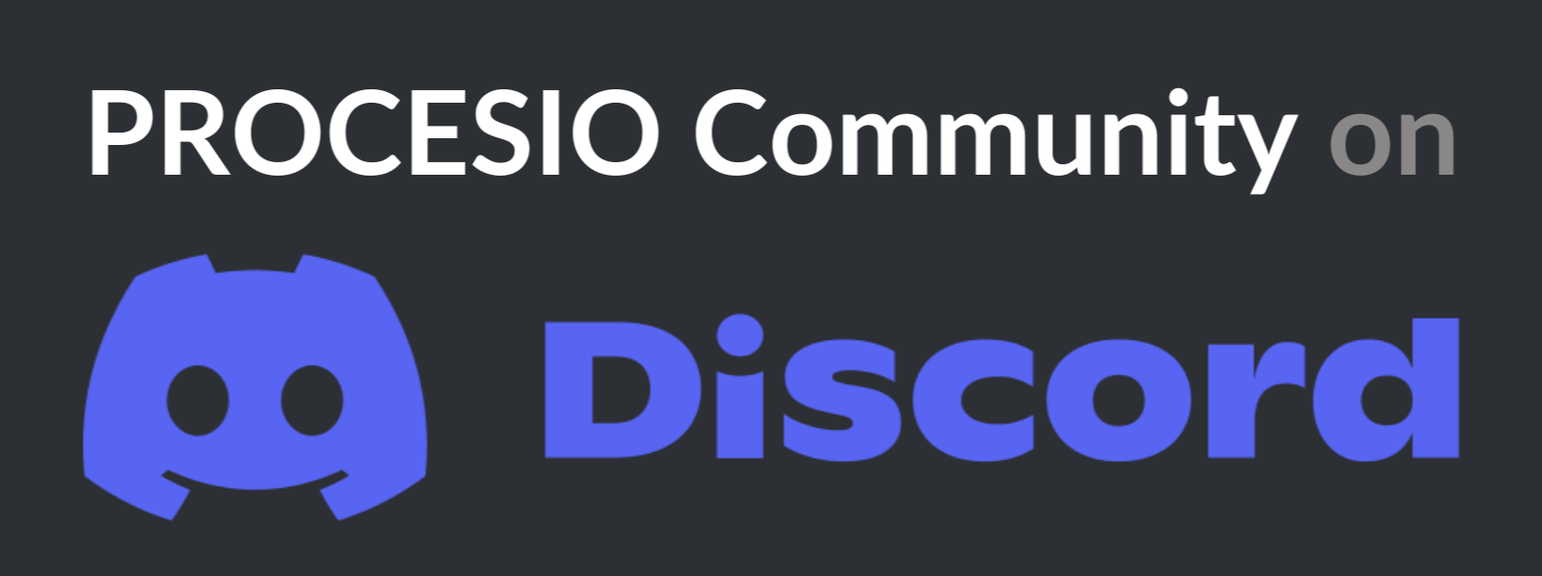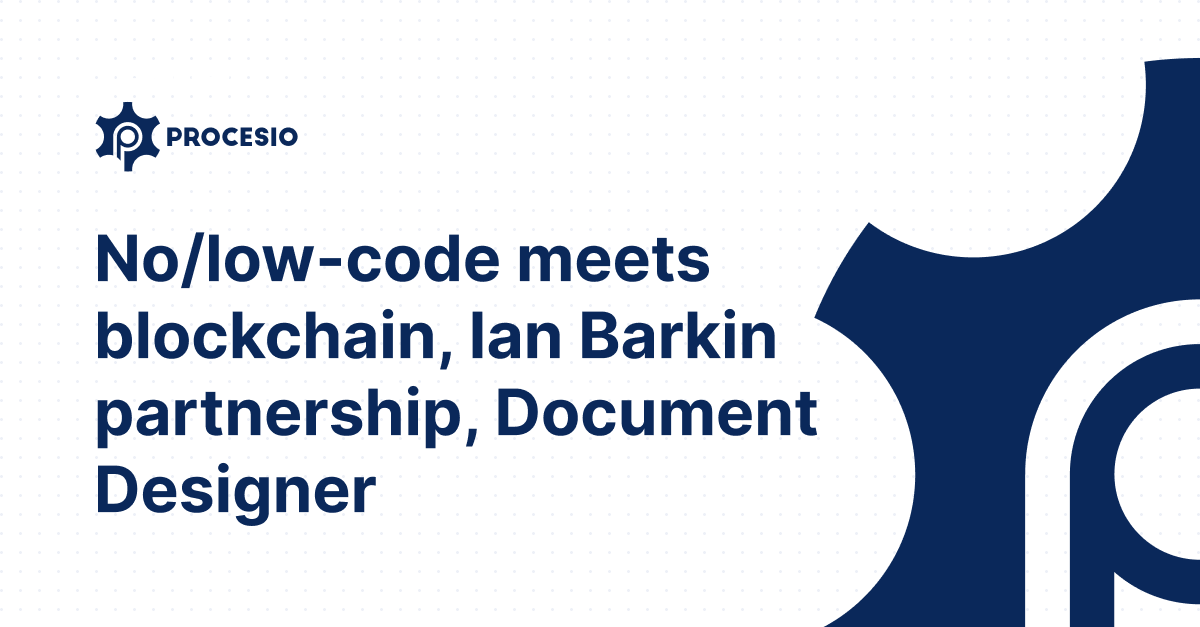Hi there! In this edition I'll be sharing with you the most important news from our community and Procesio platform updates for February. Here are the spotlights for this month:
1. PROCESIO & Modex join forces to deploy no/low-code-backed blockchain automation
2. Ian Barkin joins us as Strategic Advisor
3. Process automation in utilities: a no/low-code approach - with examples
4. Working with webhooks
5. Document Designer
PROCESIO and Modex join forces to deploy no/low-code-backed blockchain automation

We’re teaming up with Modex to deploy no/low-code-backed blockchain automation.
Modex develops scalable products and services that transform the way data and digital assets are stored, shared, and managed using blockchain technology.
️This partnership allows us to work on business workflows that showcase the synergy between the security, integrity and transparency brought by enterprise-grade blockchain technology and the efficiency of no-code low-code workflow automation.
We have jointly identified multiple use cases that take advantage of our no-code low-code process handling platform and Modex BCDB as a tool for storing, sharing, tracking, and managing sensitive business data, which we’ll be sharing with you very soon, so stay tuned!
Ian Barkin joins us as Strategic Advisor

This month we're also glad to welcome Ian Barkin as Strategic Advisor at PROCESIO.
Ian is a globally recognized expert, author, educator and influencer in the RPA and Intelligent Automation field. He was co-founder of Symphony Ventures, the leading RPA boutique consultancy, and co-author of the bestseller "Intelligent Automation - Welcome to the World of Hyperautomation".
This partnership allows us to promote automation as a means to increase efficiency and streamline processes to help respond to the digital transformation challenges companies are facing today.
We’re looking forward to a fruitful collaboration!
Process automation in energy & utilities - a no/low-code approach - with examples

Energy and utility providers were among the first to adopt software and process automation as a way to save costs, reduce manual, repetitive work, and prevent errors.
Strict regulations, changing customer expectations, and pressure from market changes are just a few of the challenges that companies operating in this field have to adapt to and find solutions for today.
No-code and low-code can provide a robust approach to build, maintain, and modify software integrations and automation by enabling both non-technical users as well as developers to create the apps they need with less pressure on IT departments. Read on for a few workflow automation examples in this field.
Working with webhooks
Webhooks are user-defined HTTP callbacks and have messages, called payload, which are sent to a unique URL in PROCESIO.
Webhooks are a way to receive data from external apps and services when specific events occur. You can also use the data from webhooks as triggers for your processes.
Here's how you can set up and start working with webhooks.
Document Designer - Community Meetup #6
The Document Designer allows you to generate documents in Word or PDF formats using dynamic data from your processes. If you're working with contracts, invoices, offers, reports, policies etc, then this use case is for you.
Here's a the demo from our community meetup:
Join us on Discord!

Our Discord server is growing and you're invited to join along. Meet us on Discord to talk everything about building on the platform, share what you're building, and to get support for your workflows.
That's it for now. We appreciate being with us on our journey to make automation and integration easier for everyone.
Thanks for reading,
The PROCESIO Team
